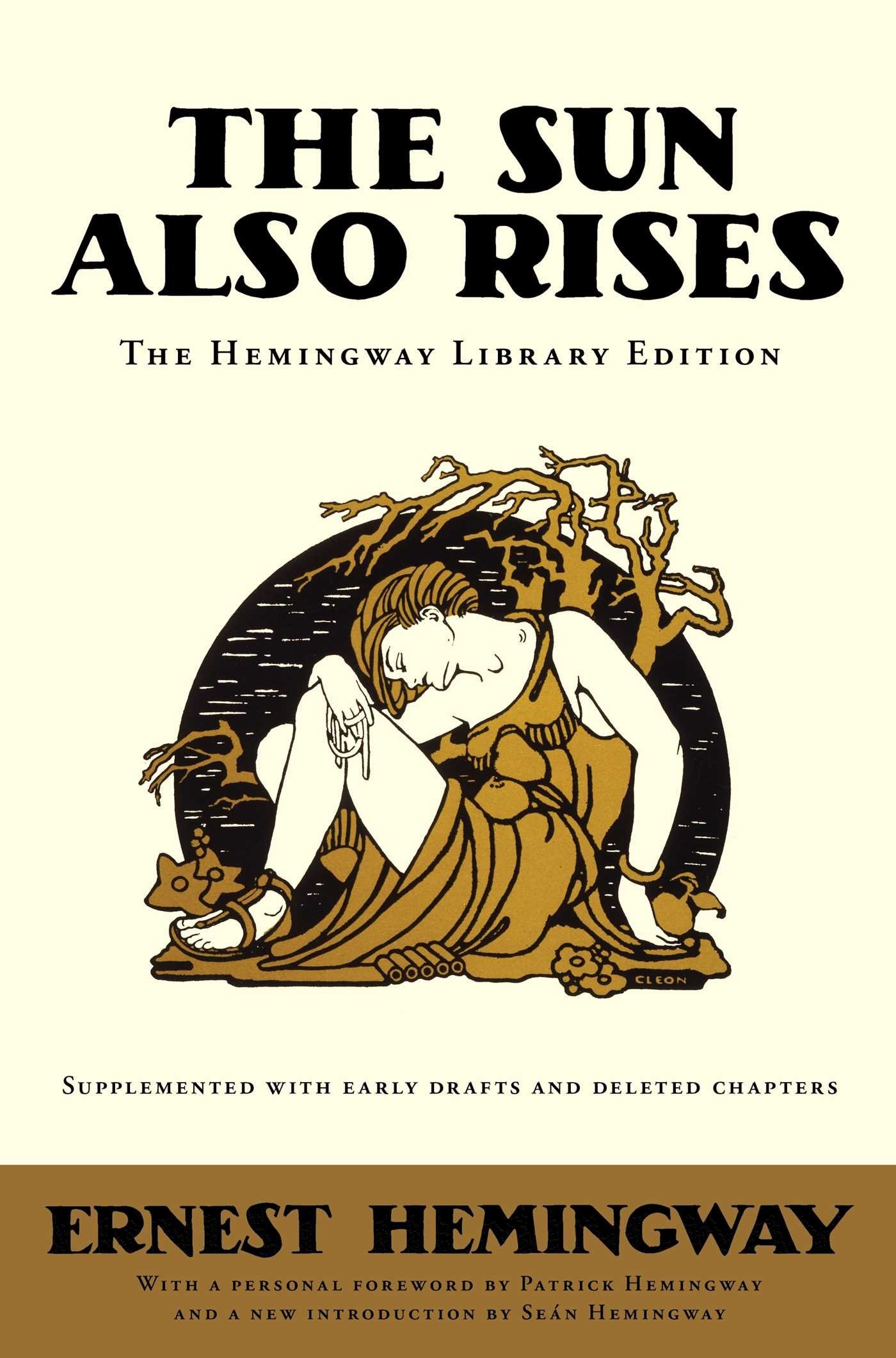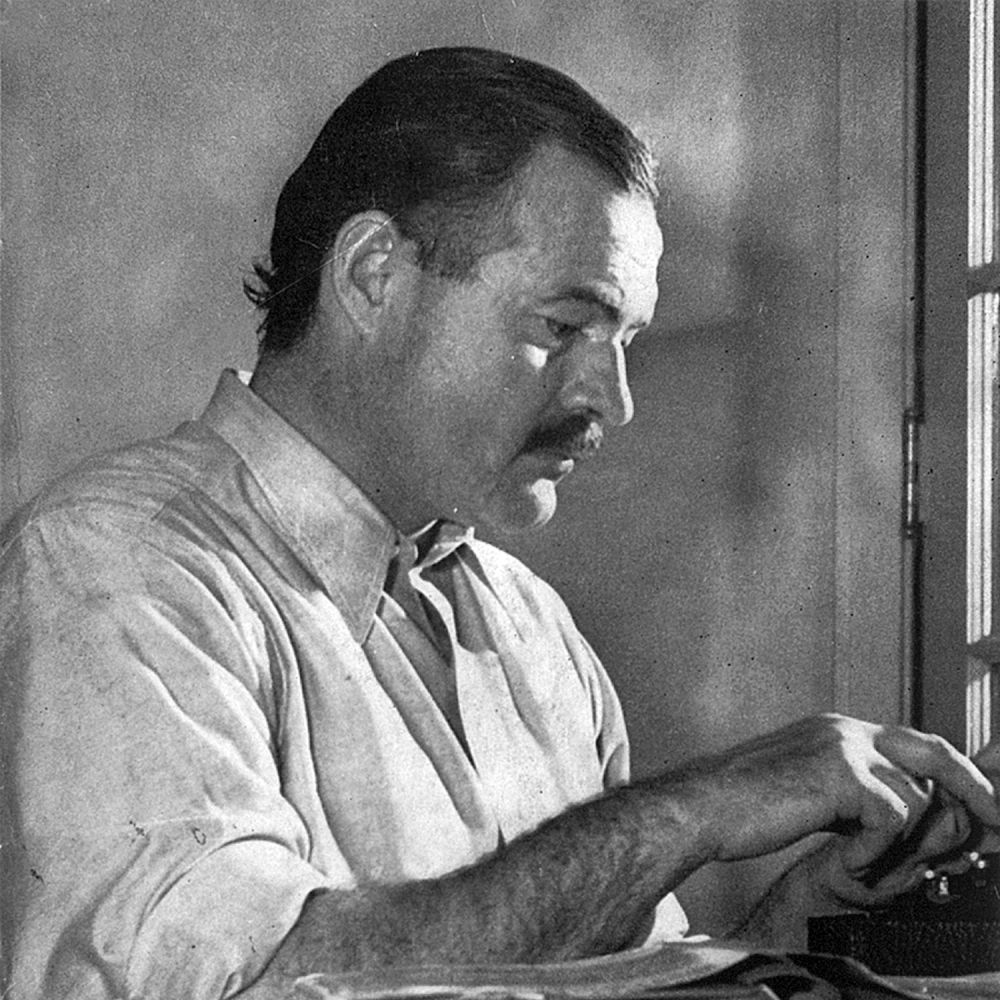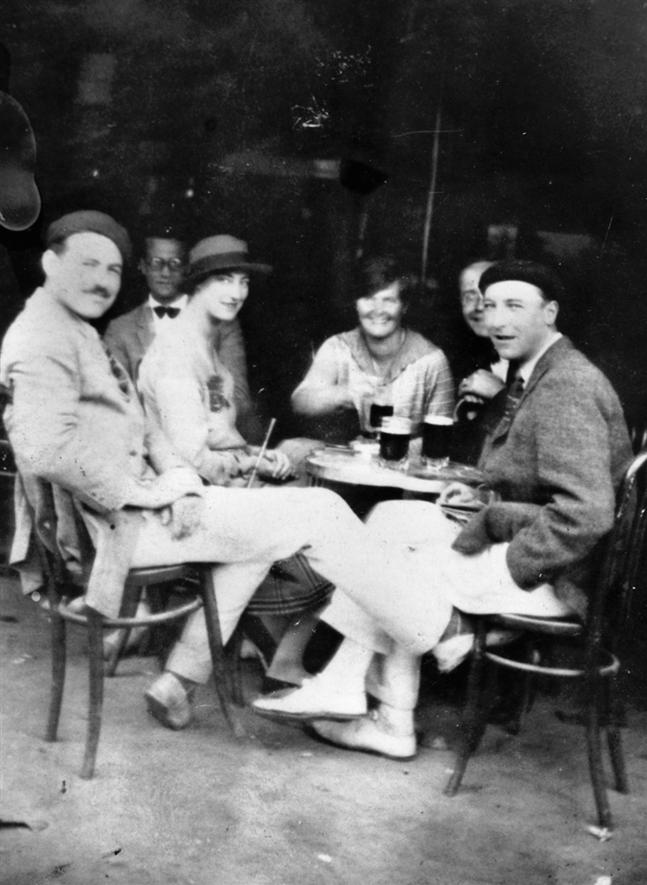The Sun Also Rises Summary
7 min read ⌚
 Back to the Roaring Twenties once again. This time with one of Fitzgerald’s best buds: Mr. Ernest Hemingway.
Back to the Roaring Twenties once again. This time with one of Fitzgerald’s best buds: Mr. Ernest Hemingway.
And his alcohol-infused, sex-crazed, macho-imbued, bullfighting-loaded, anti-Semitic bedlam of account of the times and age in “The Sun Also Rises.”
Who Should Read “The Sun Also Rises”? And Why?
If you are wondering how lost America’s Lost Generation was in the 1920s, and what the best minds of America’s post-World-War-I generation were doing in Europe at the time – here’s a firsthand account.
It’s roman à clef – so you’ll enjoy it even if you don’t like fiction. Just change the names of the characters with the ones we provided you with in the summary.
Ernest Hemingway Biography
Ernest Hemingway was one of the greatest and most influential American writers of the 20th century.
was one of the greatest and most influential American writers of the 20th century.
“A globe-trotting expert on bullfights, booze, women, wars, big game hunting, deep sea fishing, and courage,” Hemingway lived a life so adventurous that it overshadows his artistic legacy – even though he won a Pulitzer Prize for “The Old Man and the Sea” in 1953 and the Nobel Prize in Literature one year later.
A World War I ambulance driver (seriously injured during the war), he worked as a journalist for most of his early life, reporting from the Spanish Civil War and was present both at D-Day and the liberation of Paris. He also enjoyed bullfighting and safari-hunting in Africa.
He lived his later life in Cuba, survived two fatal plane crashes, and committed suicide in 1961.
Many of his short stories and novels are considered classics. His posthumously published memoir, “A Moveable Feast” is regarded as one of the best non-fiction books in history.
Plot
Before we start summarizing “The Sun Also Rises,” we would like you to present you with a photograph:

Surely, you’ll have no problems recognizing Hemingway on the far left, but you probably have no idea who the other guys are and why they might be important to the story of “The Sun Also Rises.”
Well, it’s relatively simple:
“The Sun Also Rises” is a “roman à clef” which is a fancy French phrase literary critics like to use to say that a novel is so profoundly based on real life, that if you change the names of the characters, it may be confused with a work of non-fiction.
In other words:
The photograph is basically a scene from the novel, and the people you see on it are none other but the characters.
Let’s meet them all.
So, from left to right –
Mr. Ernest Hemingway, your author/narrator named Jake Barnes in the book. He’s a World War I veteran and a successful newspaperman, who’s a bit different from the people around him, mostly because of the fact that he’s not so lost.
And how do we know this?
Well, because Jake has a passion for some things, which, incidentally, are the same things Hemingway had a passion for: nature, fishing, bull-fighting, and women.
Speaking of which –
Seated next to him (and not lurking from the background) on the photograph is Lady Duff Twysden, aka Lady Brett Ashley in the book. She’s a femme fatal, a Siren deserving of a sequel of “The Art of Seduction” based exclusively on the number of affairs she manages to have in the novel.
While we’re on the subject of Greek mythical references, she may be better off described as Circe, because, according to one character, she is capable of turning “men into swine.”
The guy between Hemingway and Twysden on the photograph – pardon us, Jake and Lady Brett Ashley – is Harold Loeb, now known mainly as Robert Cohn, the bizarro version of Hemingway/Ashley.
Meaning: Cohn is everything that Ashley is not, i.e., wimpy, passive, and not-a-World-War-I-veteran.
Also – and we have a feeling that this is the worst part – a Jew.
Which makes Ashley and “The Sun Also Rises” a bit anti-Semitic, but hey – it’s only fiction, right?
No, it’s not – and people really should be talking about this a bit more.
In the middle of the photograph – Hadley Richardson, Hemingway’s wife, the person the book is dedicated to. Also – not a character in the book.
Next to her, the nose and one eye of Donald Ogden Stewart, the man who brought you “The Philadelphia Story” in real life and Bill Gorton in the fictional world of Hemingway.
For a change, he’s a great guy who is a somewhat successful writer and, to some degree, practically another Jake – without his faults. Unsurprisingly, he’s Jake’s best buddy all throughout the novel.
Finally, on the far right, Pat Guthrie, the only one without a Wikipedia article. In the novel, he’s Mike Campbell, a somewhat sympathetic wealthy drunkard who’s gone “gradually and then suddenly” bankrupt and who seems to have lost all purpose in life once the war ended.
In the book (but probably not in real life) Mike’s also the fiancé of the twice-divorced Englishwoman Lady Brett Ashley, who, unsurprisingly, is in love with (who else but) Jake Barnes.
However, even though she loves him, they can do nothing about it, since a mysterious war wound has left Jake impotent.
Also – because Lady Brett Ashley’s concept of love has nothing to do with the one Disney taught us all about when we were children.
Which is basically the opposite of what Robert Cohn thinks about love.
Which makes things rather complicated when he joins the group of Brett-worshippers and falls in love with Brett.
Brett is not actually smitten, but that doesn’t stop her from going away with Cohn to San Sebastian and having a brief affair with him.
In the meantime, Bill Gorton comes to Paris from New York and Mike Campbell, Brett’s fiancé, arrives there from Scotland.
And they all agree that the best way to pass their summer is to go bullfighting in Pamplona. Since in case you didn’t know:
Nobody ever lives their life all the way up except bullfighters.
We’ll pass, Ernie.
We’ll pass.
So, after a brief fishing trip, Bill and Jake join Brett, Mike, and Robert in Pamplona, and you know that things are about to go mayhem: of the four guys, there are three infatuated with the same girl.
Wait – make that four!
No – we’re not talking about Bill.
We’re talking about a 19-year-old matador named Pedro Romero.
Different blood flows through the veins of such people, and Brett isn’t exactly a girl who’d like to spend a lifetime of not finding out how different.
So, she seduces poor Pedro and has a scandalous and passionate (could it be any different?) affair with the matador.
Poor?
Why poor?
Well, because, as we learn from the very first sentence in “The Sun Also Rises,” “Robert Cohn was once middleweight boxing champion of Princeton.”
And now – he’s obsessed with Brett.
You know where this is going –
After having fistfights with both Jake and Mike, Robert beats up Romero.
Now, who would have seen that one coming?
Everybody.
Absolutely everybody.
Alcohol and love was never a right combination.
The Sun Also Rises Epilogue
After the fiesta – finally sober – the group disbands and everyone goes his own way: Bill goes to Paris, Mike stays in Bayonne, and Jake is off to San Sebastian.
Not so fast, Jake!
While in San Sebastian, he receives a telegram from Brett who has gone to Madrid with Pedro Romero. And she needs help.
Jake finds Brett moneyless and Pedro-less, crying in a cheap hotel.
She wants to go back to Mike.
As so many times before, Jake helps Brett once again.
And like so many times before, they once again think about the love they could have had and the fact that they will never be able to be together.
We’ll end this summary with one of the book’s two epigraphs:
You are all a lost generation.
That’s what Gertrude Stein said to the characters of this novel in real life.
And she was a smart woman.
Like this summary? We’d like to invite you to download our free 12 min app, for more amazing summaries and audiobooks.
“The Sun Also Rises PDF Quotes”
Going to another country doesn’t make any difference. I’ve tried all that. You can’t get away from yourself by moving from one place to another. There’s nothing to that. Share on X It is awfully easy to be hard-boiled about everything in the daytime, but at night it is another thing. Share on X Don't you ever get the feeling that all your life is going by and you're not taking advantage of it? Do you realize you've lived nearly half the time you have to live already? Share on X I did not care what it was all about. All I wanted to know was how to live in it. Maybe if you found out how to live in it you learned from that what it was all about. Share on X You're an expatriate. You've lost touch with the soil. You get precious. Fake European standards have ruined you. You drink yourself to death. You become obsessed with sex. Share on XOur Critical Review
Hemingway’s last major work, “The Old Man and the Sea” may be his most beloved and most widely read work – and also the one mentioned in the Nobel citation when he won the Prize in 1954 – but “The Sun Also Rises,” essential his first major novel, is considered to be “his greatest work” and “the most important novel” he has written during his adventurous life.
Exquisitely written and understated, famously distrustful of adjectives, but full of action to the point of being likened to a work of hardboiled fiction – “The Sun Also Rises” is an American literary classic that needs no recommendation.
Nevertheless, we are going to give it one – simply because it’s that good.
Emir is the Head of Marketing at 12min. In his spare time, he loves to meditate and play soccer.
Comments are closed.








102 Comments